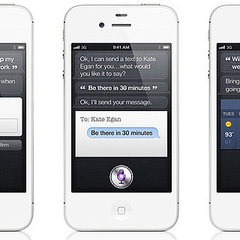Recognizing Voice Commands
 By recognizing voice commands and responding to them, I do not mean a soldier following his officer’s order nor a child scurrying as the mother calls him. I use the phrase to refer to an old voice recognition technology embedded in an integrated circuit which has been around for more than two (2) decades. It is an artificial intelligence of a device that parses natural human language and respond by providing the information stored in a database.
By recognizing voice commands and responding to them, I do not mean a soldier following his officer’s order nor a child scurrying as the mother calls him. I use the phrase to refer to an old voice recognition technology embedded in an integrated circuit which has been around for more than two (2) decades. It is an artificial intelligence of a device that parses natural human language and respond by providing the information stored in a database.
Though already a bit old and had been used in gadgets like children’s toys and music synthesizers, the voice recognition technology is now the buzz in technosphere because Apple, the leading technology company at present, has unveiled Siri, a feature in its latest model of a smartphone that lets you complete tasks on your phone by talking to it. During an on-stage demo at the launch of the new iPhone 4S, an Apple executive demonstrated Siri’s ability to process natural language and respond accordingly. When he asked the iPhone 4S, “What’s the weather like today?” it responded with the weather forecast.
In addition to forecasts, Siri can read messages back, search Wikipedia, schedule calendar appointments, set work reminders, transcribe text messages, search Google Maps and more. It processes the user’s habits and patterns and personalizes results based on his preferences. Siri will come with built-in support for English, French and German.
Apple’s use of the old voice recognition technology in Siri as the top feature in its latest smartphone model came out as a surprise because many were expecting a lot more than that. Gadget techies were expecting the launch of an iPhone 5 with a new form factor and more sophisticated feature like being able to be used as a small projector.
Well, it did not turn out the way we expected and instead, the iPhone fanboys may have to do with a personal assistant that utilizes a technology I met sometime in the late 1980’s when I had the chance to work with a telephone assembly facility in Hong Kong. More on this later.




Latest Feedbacks